Mya (Arenomya) arenaria Linnaeus, 1758Common name(s): Softshell clam, Eastern softshell clam, Mud clam, Soft clam, Long-necked clam, Long clam, Steamer clam, Nanny nose, Sand gaper |
|
| Synonyms: |  |
|
Subclass Heterodonta
Order Myoida
Suborder Myina
|
|
| Mya arenaria from the beach at Freeland, Holmes Harbor, Whidbey Island. | |
| (Photo by: Dave Cowles, July 2007) | |
How to Distinguish from Similar Species: Mya truncata and Platyodon cancellatus have a truncate posterior end and rarely exceed 7 cm. This species may be found along with horse clams such as Tresus capax and may look like a small individual of that species or especially like Tresus nuttallii, but the horse clams such Tresus capax have a chondrophore in BOTH valves and a large gape between the valves at the posterior end (photo).
Geographical Range: Norton Sound, AK to Elkhorn Slough, Monterey, CA; Japan, Kamchatka, North Atlantic, North and Baltic Seas
Depth Range: Intertidal (optimum depth in San Francisco Bay is 30 cm above zero tide line)
Habitat: In mud or sandy mud, sometimes mixed with gravel. Common in estuaries and other areas of reduced salinity (to as low as 23% seawater).
Biology/Natural
History:
This clam
has been introduced from the Atlantic, being first seen in San
Francisco
Bay in 1874. It slowly spread north, and reached Alaska in
the 1950's.
By the 1920's it seems to have largely displaced the native clams in
San
Francisco Bay. This clam has long siphons,
and can be 20-35 cm below the surface. It can live
anaerobically
for several days, and dissolves the shell to buffer acidity in these
conditions.
In San Francisco Bay its optimal intertidal depth is 30 cm above zero
tide
line. The siphons
appear as slits at the surface of the mud, and emit a spurt of water as
they contract if one steps near them. This clam burrows only
slowly,
without using the foot much. Burrowing is by closing the valves
and forcefully ejecting water. Predators include skates,
rays, and
sharks. Predators in Europe include oystercatchers and
curlews, from
which the clams have a refuge in depth if over 15 cm deep.
May contain
pea crab symbionts. Mature at about 2-4.5 cm, and spawn in
spring
or summer. This species is highly esteemed for food.
| Return to: | |||
| Main Page | Alphabetic Index | Systematic Index | Glossary |
References:
Dichotomous Keys:Flora and Fairbanks, 1966
Kozloff 1987, 1996
Smith and Carlton, 1975
General References:
Brusca
and Brusca, 1978
Carefoot,
1977
Fitch,
1953
Harbo,
1997
Harbo,
1999
Kozloff,
1993
Morris,
1966
Morris
et al., 1980
Niesen,
1994
Niesen,
1997
O'Clair
and O'Clair, 1998
Rice,
1973
Sept,
1999
Scientific Articles:
Web sites:
General Notes and Observations: Locations, abundances, unusual behaviors:
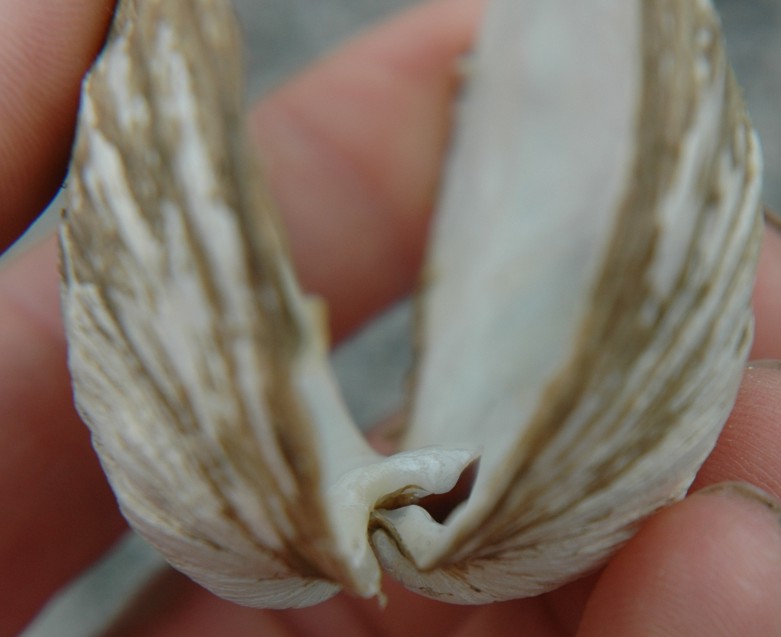
In this view of the hinge mechanism from the anterior
end of the shell, the large chondrophore
projecting from the hinge
plate of the left valve
can be seen.
The left chondrophore
attaches by the hinge
ligament (dark brown in this photo) to a socket in the right valve,
dorsal to the chondrophore.
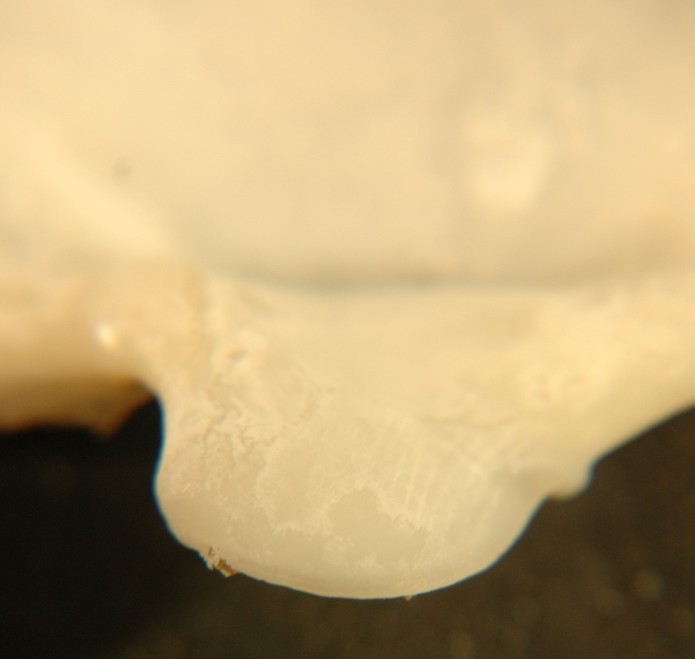 |
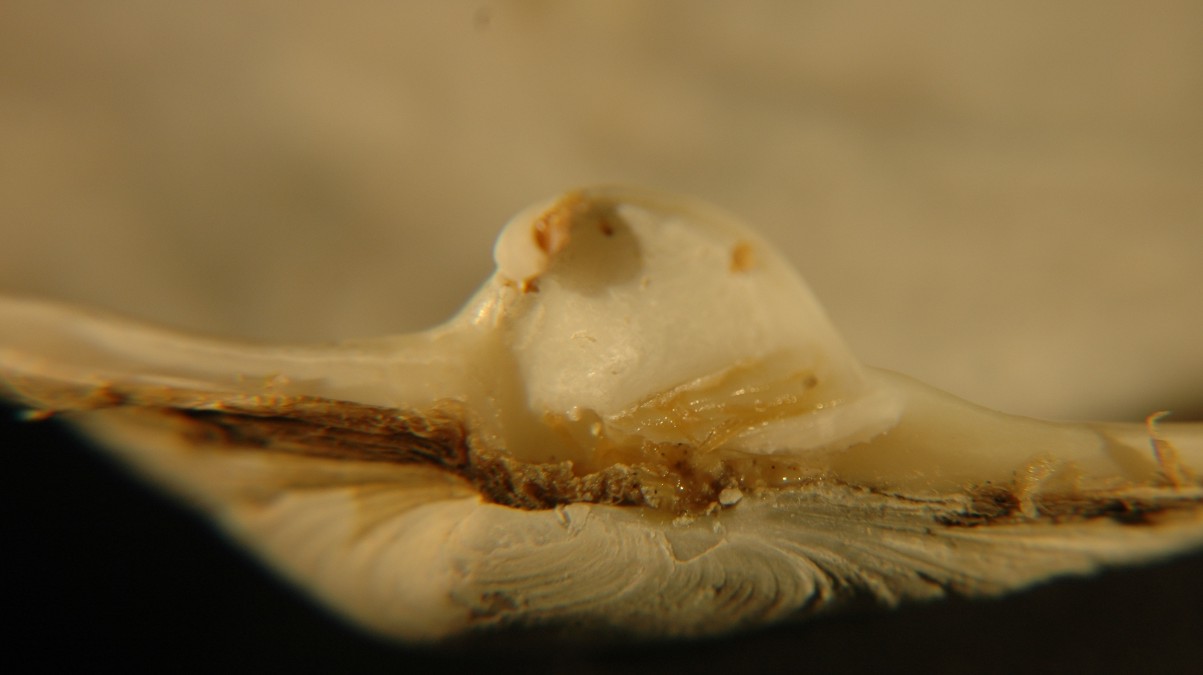 |
| The large chondrophore projecting from the left hinge can be seen here. This view is looking toward the hinge plate from inside the clam. The hinge ligament attaches to the other side of the chondrophore. | This view shows the left chondrophore from the hinge plate side. This is the side the hinge ligament attaches to. Notice the projection from the anteroventral margin of the chondrophore, which probably gives stronger attachment to the ligament |
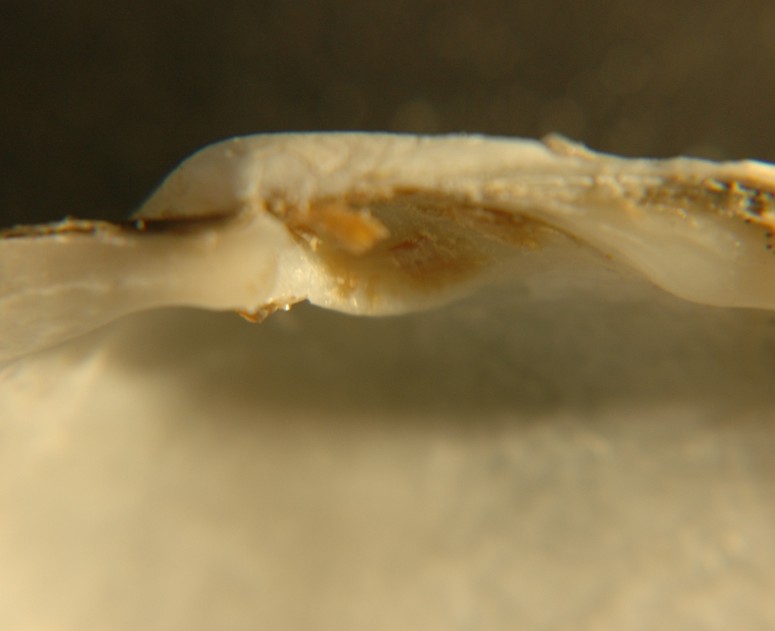 |
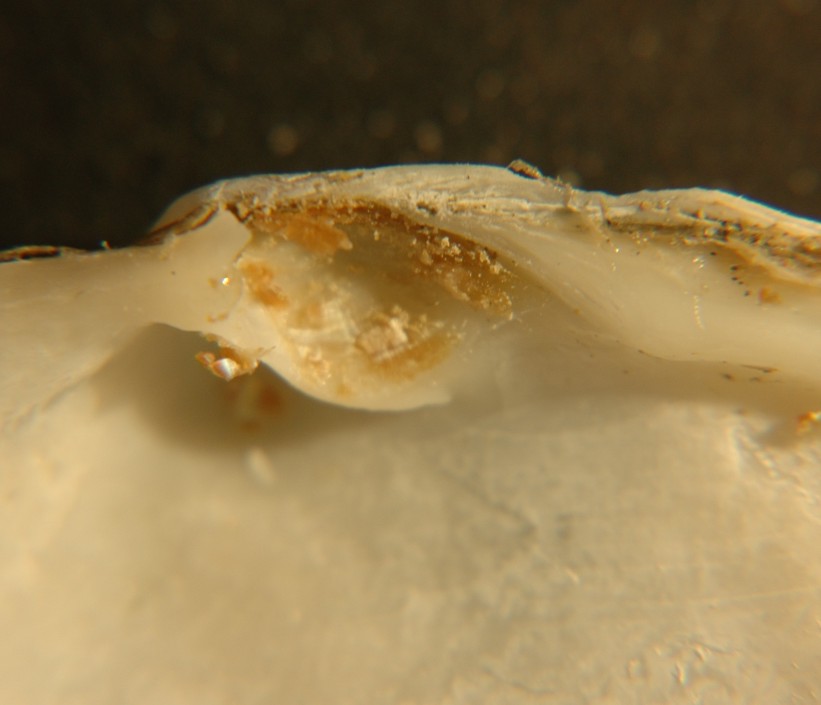 |
| In this view of the right hinge plate from perpendicular to the shell, the socket in the right valve to which the hinge ligament from the left chondrophore attaches can be seen. Note that the socket angles back from the plate | Tipping the right valve up so that the socket can be clearly seen shows the size of the socket. |
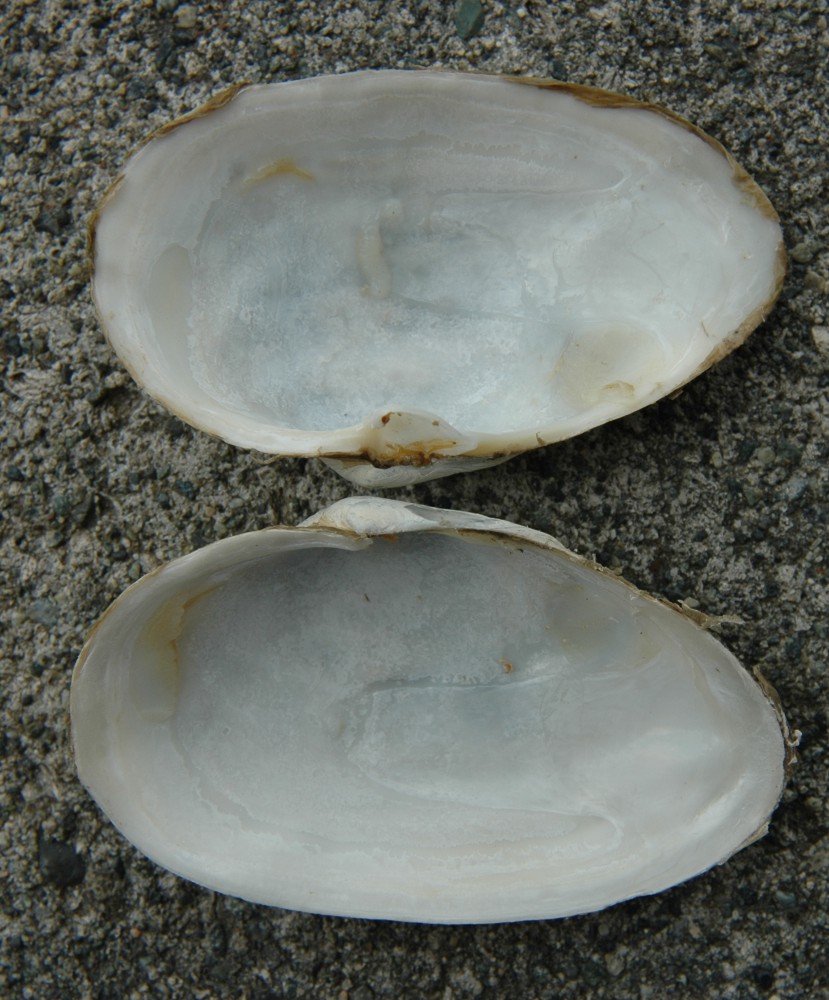
The inside view of the clam shows the deep pallial sinus, the large
anterior
and posterior
adductor muscle scars, and the arrangement of the chondrophore
(left valve)
and
socket (right valve).
Anterior
is to the left in this view. The upper valve is the left valve,
the lower is the right valve.

This view of the umbo,
which is slightly anterior
to the middle of the shell, also shows that both ends, especially the posterior
end (to the right) often gape at least slightly. No hinge
ligament can be seen because it is internal and attached to
the chondrophore.
Note the chalky texture and brittleness of the shell.

The siphons
in this species are brown with darker tips. These siphons
are not fully extended.
Authors and Editors of Page:
Dave Cowles (2007): Created original page
CSS coding for page developed by Jonathan Cowles (2007)